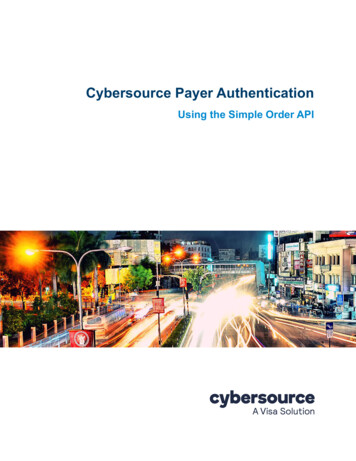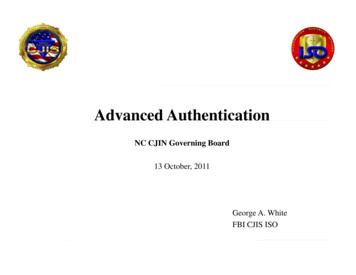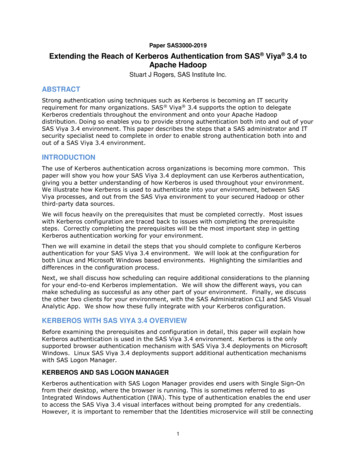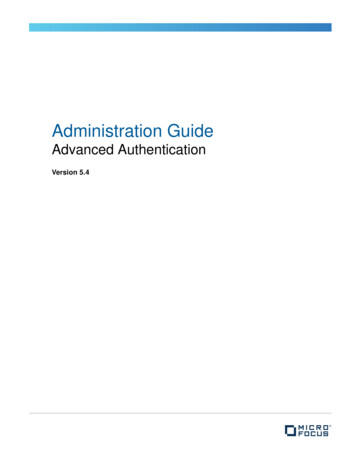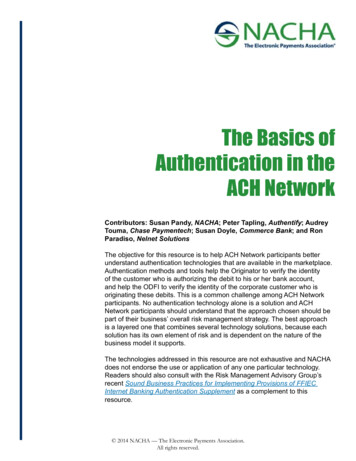
Transcription
The Basics ofAuthentication in theACH NetworkContributors: Susan Pandy, NACHA; Peter Tapling, Authentify; AudreyTouma, Chase Paymentech; Susan Doyle, Commerce Bank; and RonParadiso, Nelnet SolutionsThe objective for this resource is to help ACH Network participants betterunderstand authentication technologies that are available in the marketplace.Authentication methods and tools help the Originator to verify the identityof the customer who is authorizing the debit to his or her bank account,and help the ODFI to verify the identity of the corporate customer who isoriginating these debits. This is a common challenge among ACH Networkparticipants. No authentication technology alone is a solution and ACHNetwork participants should understand that the approach chosen should bepart of their business’ overall risk management strategy. The best approachis a layered one that combines several technology solutions, because eachsolution has its own element of risk and is dependent on the nature of thebusiness model it supports.The technologies addressed in this resource are not exhaustive and NACHAdoes not endorse the use or application of any one particular technology.Readers should also consult with the Risk Management Advisory Group’srecent Sound Business Practices for Implementing Provisions of FFIECInternet Banking Authentication Supplement as a complement to thisresource. 2014 NACHA — The Electronic Payments Association.All rights reserved.
Why Does An Originator Have to Use CommerciallyReasonable Authentication Methods?Why Does An ODFI Have to Use Commercially ReasonableAuthentication Methods?The NACHA Operating Rules use the terminology, “Verification of the Identity of theReceiver” to refer to the requirement that ODFIs warrant that their WEB Originators are usingcommercially reasonable methods of authentication to verify the identity of their Receivers.ODFIs sometimes ask what constitutes “commercially reasonable” authentication methodsfor this purpose. According to the NACHA Operating Rules, “a commercially reasonablesystem, technology, practice, or procedure is one that corresponds to the commonly acceptedcommercial practices among similar types of transactions. The concept of commercialreasonableness means that a party, given the facts of a specific transaction, acted in a waythat other similar parties would have acted” (OG 25). A similar standard is used in Article 4A ofthe Uniform Commercial Code (UCC) with respect to allocation of liability between ODFIs andsenders (Originators of ACH credits).It is equally important for ODFIs to employ commercially reasonable authentication methodsto identify its customer when enabling ACH credits to be sent directly from its accounts. TheFederal Financial Institutions Examination Council (FFIEC) guidance, “Authentication in anInternet Banking Environment,” was originally issued in 2005 and updated in June 2011 (2011Supplement). The FFIEC determined that the use of single factor authentication methods, suchas passwords and user identification, are no longer sufficient if an electronic banking systempermits high-risk transactions (i.e., movement of funds or access to customer information). TheFFIEC concluded that financial institutions should implement multifactor authentication, layeredsecurity or other controls reasonably calculated to mitigate the risks.The 2011 Supplement is a critical key to understanding trends in what is considered“commercially reasonable” authentication technology and for understanding the bankregulators’ expectations for such controls. As payments technology and services have evolved,so too have the internal and external threats to those services, as well as the understandingof what may be a commercially reasonable method for addressing those ever-changingthreats. An example of how the commercially reasonable standard has changed over time isindicated by the shift away from the use of username and passwords as the only means ofauthentication, to the declaration that this practice is no longer considered sufficient by theFFIEC. The 2011 Supplement also points out that simple device ID and challenge questionsare no longer considered effective as primary controls and that additional controls are required,thereby underscoring the need for a layered approach to security. As indicated by the 2011Supplement, threats may eventually evolve to the point that technologies and methods thatwere once acceptable may be no longer be considered commercially reasonable for varioustypes of transactions.There is no single industry standard for verification of the identity of the Receiver. Theauthentication process for WEB transactions can consist of two steps:1.Ensuring that the name given for a particular transaction corresponds to a real-worldidentity, and2.Confirmation that the person providing that name is truly the Receiver associated withan account and not an unscrupulous impersonator.The combination of increased identity theft, fraud (which affects both the merchant andcustomer), and focus on terrorism prevention has heightened interest for deploying strongerauthentication methods.Authentication is an important component of managing the risk for WEB payments. Theanonymous nature of the Internet creates significant challenges in the verification process,since traditional methods of verification typically used in a face-to-face setting are not viable onthe Internet (e.g., photo ID). Since Originators may ultimately be responsible for transactionsthat are returned as unauthorized, it is to their benefit to incorporate adequate levels ofauthentication into their business practices.To further understand the concept of what it means for authentication methods to becommercially reasonable, readers may wish to consult the recent court case, PATCOConstruction Company, Inc. v. Ocean Bank (now People’s United Bank) (No. 11-2031). Thetrial court’s original ruling in May 2011 favored the bank and its online security procedures.However, this ruling was reversed in July by the U.S. federal appeals court for the First Circuit,which ruled that Ocean Bank’s security procedures were “commercially unreasonable” forpurposes of UCC Article 4A’s requirement that banks offer commercially reasonable securityprocedures to their customers in order to avoid liability for certain unauthorized transactions.Furthermore, a risk-based approach to authentication allows a business to take into accountthe specific circumstances of the transaction, i.e. the type of transaction, the type of customer,etc. For instance, recurring transactions that are enabled for regular bill payment transactionswith known customers may require less robust authentication than one-time payments madefrom new customers.The case involves the plaintiff, PATCO, a Maine-based construction firm, which was negativelyimpacted by a series of fraudulent transactions from the firm’s commercial account with theformer Ocean Bank. PATCO claimed that Ocean Bank was not in compliance with the existingFFIEC authentication requirements and did not act in a commercially reasonable manner whenit relied solely on login and password credentials and universally applied challenge questionsto verify transactions.A risk-based authentication model helps to prevent a bad user experience, too. Somebusinesses may be employing too many authentication tools for activity that may be low risk.Therefore, it is important for businesses to evaluate their overall need for authentication toolsand solutions. 2014 NACHA — The Electronic Payments Association.All rights reserved.2 2014 NACHA — The Electronic Payments Association.All rights reserved.3
Why is Understanding Authentication Important?In the court’s review of the bank’s security measures, it noted that several security measureswere available and used by others but were not employed by Ocean Bank, including outof-band authentication, user-selected picture functions, tokens, and monitoring. Tokenbatteries can last 3-5 years and the devices cost anywhere from 5 - 50 depending uponsize, sophistication, features, order quantity, etc. Tokens also include an installation cost onthe merchant’s server, accompanied by an internal resource to provide maintenance andoversight. Depending on the size and complexity of an institution’s systems, the cost of evena single account takeover and/or fraudulent wire transfer may considerably outweigh theinvestment.In addition, because Ocean Bank effectively required that all transactions over 1 be approvedusing challenge questions, the court concluded that the bank had substantially increasedthe risk that the answers to those questions would be intercepted, thereby lessening theeffectiveness of that authentication method. Further contributing to the court’s conclusion thatthe bank’s security systems were unreasonable was the fact that Ocean Bank’s transactionmonitoring practices were inadequate and its lack of standardization for customer notificationwhen high-risk transactions were detected. Although no one failure was necessarily fatal,as a result of the combination of all these factors, the court concluded that Ocean Bank’sdeficient “one-size-fits-all” approach to monitoring and authenticating high-dollar transactionsunreasonably exposed PATCO to more risk.For more information about this case les/external/First Circuit Order -headed-to-trial-a-2912Regardless of whether other courts follow the PATCO case in the future, it underscores thecritical nature of understanding the importance of authentication as part of an overall riskmanagement strategy. To mitigate fraud risk within the ACH, it is important for an ODFI toemploy commercially reasonable authentication methods, and for the ODFI to ensure thatits Originator is employing commercially reasonable methods to verify the identity of theReceiver. While the NACHA Operating Rules require WEB Originators to deploy commerciallyreasonable procedures to verify the identity of the consumer, it is the ODFI that is ultimatelyresponsible for the transaction. The ODFI will likely be considered a source for advice inselecting an identity verification method by the Originator. ODFIs are encouraged to work withWEB Originators to develop sound methods to verify the identity of the Receiver.The following section discusses some of the methods that are available for satisfyingauthentication needs. In order to satisfy authentication requirements, ODFIs may wishto consider utilizing a combination of the following methods based on their overall riskmanagement strategy. NACHA does not endorse any specific technology or approach, as eachODFI must consider which technologies, processes and procedures are most appropriate formanaging risk.Authentication TechnologiesDevice IdentificationSimple Device Identification (Device ID): This method typically uses a cookie loaded onthe customer’s PC to confirm that it is the same PC that was enrolled by the customer andmatches the logon ID and password that is being provided. However, experience has shownthis type of cookie may be copied and moved to a fraudster’s PC, allowing the fraudster toimpersonate the legitimate customer. Device ID has also been implemented using geo-locationor Internet protocol (IP) address matching. However, increasing evidence has shown thatfraudsters often use proxies, which allow them to hide their actual location and pretend to bethe legitimate user.Complex Device Identification (ID): A technique which uses “one-time” cookies and createsa more complex digital “fingerprint” by looking at a number of characteristics including PCconfiguration, IP address, geo-location, and other factors. Although no device authenticationmethod can mitigate all threats, the bank regulatory agencies (FFIEC 2011) consider complexdevice ID to be more secure and preferable to simple device ID. They further indicate that“[i]nstitutions should no longer consider simple device ID, as a primary control, to be aneffective risk mitigation technique.” (FFIEC 2011 Supplement to Guidance on Internet BankingAuthentication)IP address matching and geo-location techniques are methods used to implement device ID. 2014 NACHA — The Electronic Payments Association.All rights reserved.4 2014 NACHA — The Electronic Payments Association.All rights reserved.5
IP Address/Geo-LocationID Verification CheckGeolocation is the practice of determining the physical, real world location of a person, deviceor subject matter using digital information processed through the Internet or other electronicmeans of communication. A growing trend in geolocation is deriving the city, ZIP code or regionfrom which a person is or has connected to the World Wide Web by using their device’s IPaddress or that of a wireless access point, such as those offered by coffee houses. Anotherform of geolocation involves utilizing the exact location featured in photo or video contentbased on longitude and latitude coordinates attached digitally to the media file manually or byGPS-enabled cameras.ID verification is a method that takes into account a number of personal attributes about anindividual in order to verify their identity. For instance, certain attributes may indicate some typeof suspicious or fraudulent activity in real-time when compared to database intelligence (i.e.the address is linked to 75 different names).Even when not precise, geolocation can place users in a bordering or nearby city, which maybe good enough for the entity seeking the information. This happens because a commonmethod for geolocating a device is referencing its IP address against similar IP addresses withalready known locations.TokensThis score can reflect a variety of information such as:1. The personal information is found to be a good or bad match based on real-time andhistorical records, and2. The level of any other suspi
Touma, Chase Paymentech; Susan Doyle, Commerce Bank; and Ron Paradiso, . The combination of increased identity theft, fraud (which affects both the merchant and customer), and focus on terrorism prevention has heightened interest for deploying stronger authentication methods. Authentication is an important component of managing the risk for WEB payments. The anonymous nature of the Internet .
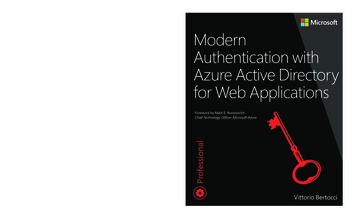
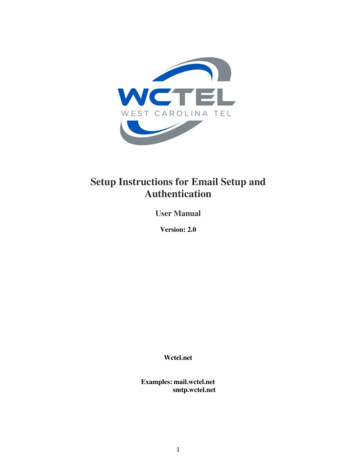
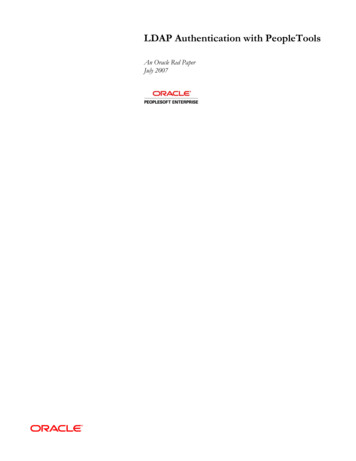

![[MS-OFBA]: Office Forms Based Authentication Protocol](/img/3/ms-ofba.jpg)


